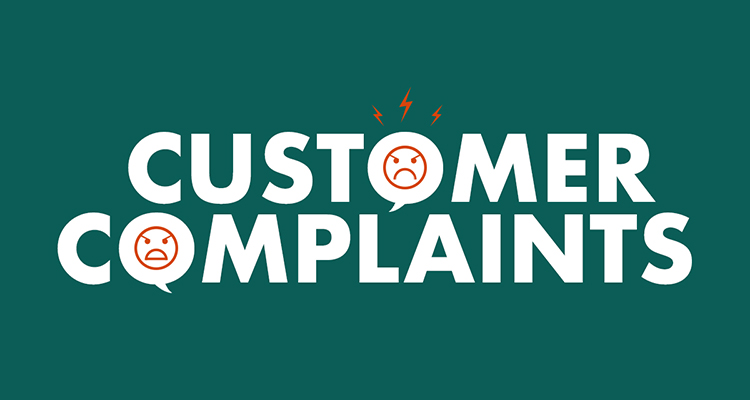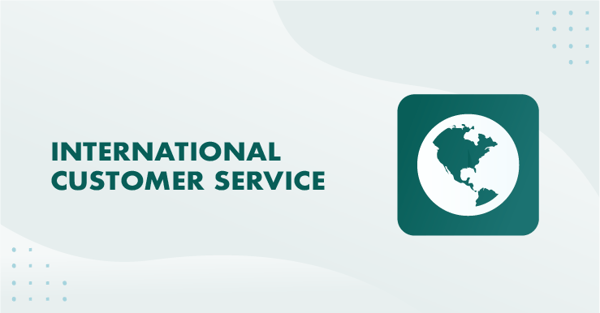Customers have more power than ever.
If customers have a positive experience with your company, they will share this experience with friends, family and connections - which in turn can lead to new business.
All at zero cost.
But what happens if you fail to provide a positive customer experience?
The answer is simple. Your customers will complain.
According to research by Esteban Kolsky, 13% of unhappy customers will share their complaint with 15 or more people.
Furthermore, only 1 in 25 unhappy customers complain directly to you.

And for customers that don’t complain, they just stop doing business with you. The overwhelming majority (91%) of unhappy customers who don’t complain simply leave.
There is a silver lining here:
A customer complaint highlights a problem, whether that's a problem with your product, employees or internal processes, and by hearing these problems directly from your customers, you can investigate and improve to prevent further complaints in the future.
Furthermore, research finds that customers’ whose complaints are handled quickly can often turn into loyal customers and even brand advocates.
In fact, a study by Harvard Business Review found that customers who have a complaint handled in less than 5 minutes are willing to spend more on future purchases.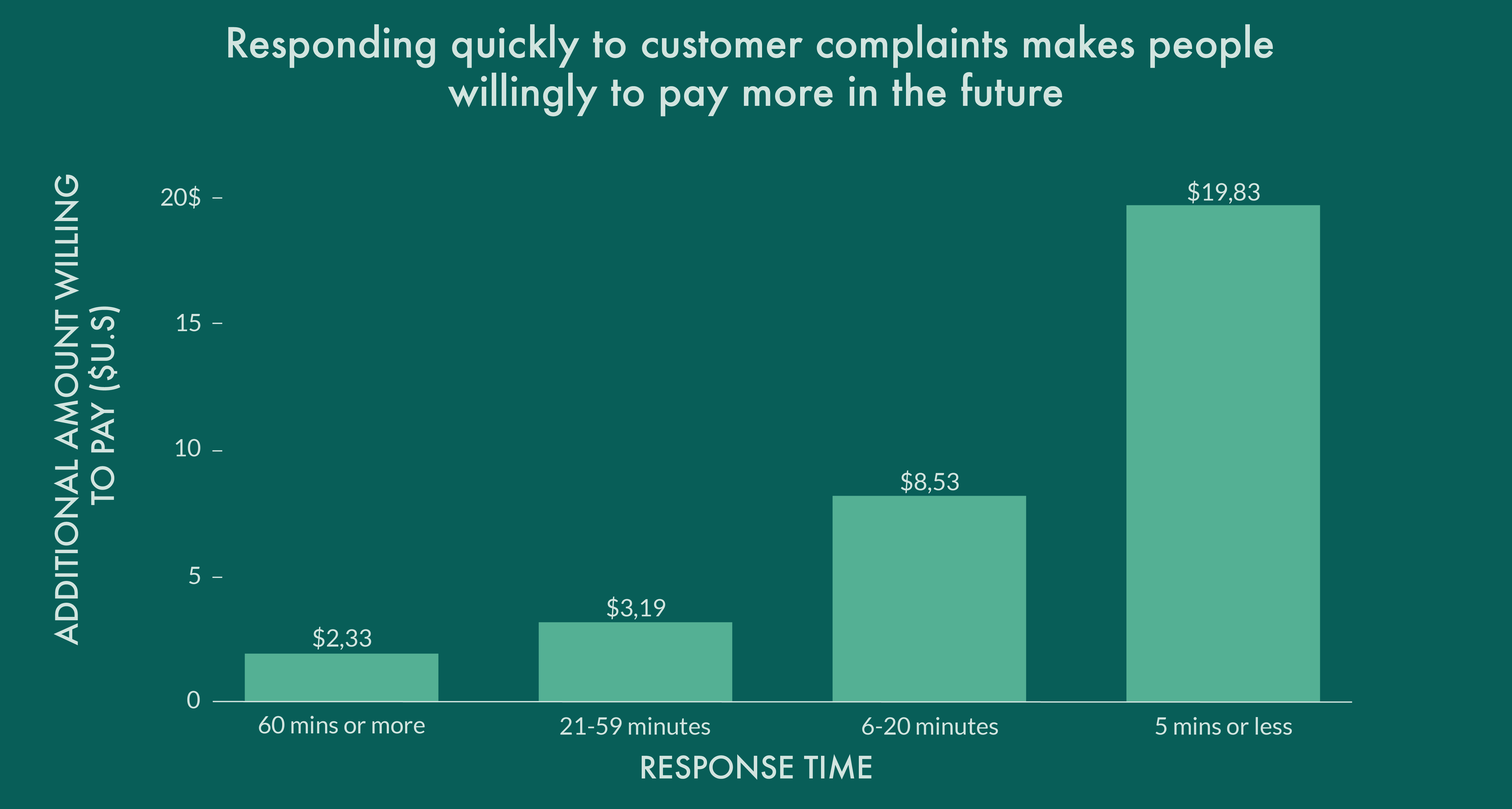
In addition, survey by PwC found that 32% of all customers would stop doing business with a brand they loved after one bad experience.
This statistic underscores the precarious nature of customer loyalty and the critical importance of addressing complaints swiftly and effectively.
The financial implications of customer service are significant.
According to a report by NewVoiceMedia, businesses lose $75 billion annually due to poor customer service.
This staggering figure highlights the direct correlation between customer complaints, service quality, and the bottom line, emphasizing the necessity of an effective complaint resolution strategy.
How to analyze customer complaints
When you receive a complaint, the first step is to analyze it.
Complaint analysis is used to track, categorize and handle customer complaints.
When a customer makes a complaint, he or she is voicing a concern in relation to your product or service. However, not all complaints are to be treated equally and there are several questions to ask yourself before you take action, including:
- Has this happened before?
- Have the complaints been recorded?
- How often does the same complaint arise?
- Is there a pattern to this complaint in how it was received?
- Has the same customer reported this previously?
By answering these questions, you can take the necessary steps required to prevent them from happening again.
For example, if several customers complain about a specific issue, you can use their feedback to improve your product or service.
Or, if you are currently working on a solution, yet you still receive complaints from your customer base, you can create an email template for support that explains, in detail, how you are going to solve it.
Create customer complaint guidelines & policies
If you want to provide a consistent, satisfactory experience with your customers, establishing formal guidelines and policies helps to log, investigate and resolve any customer dissatisfaction and problems.
The overall goal of these guidelines and policies are meant to:
- Turn a dissatisfied customer into a satisfied customer
- Align your customer service team’s response and actions
- Analyze areas of your business to improve experiences
Customer complaints are opportunities to collect information about a customer’s needs, opinions, attitudes, and beliefs. In most cases, upset customers are looking for help and clarity, not trouble, and are simply responding to common issues such as:
- Product or service quality
- Safety concerns
- Timing
- Color and sizing
- Overpricing
- Accidental charges
- Shipping errors
- Broken promises
- Misleading advertising
The key to overcoming these common issues is by creating a clear process and a coordinated response that addresses the customer’s complaints.
Here are a few best practices when it comes to training your employees and creating guidelines and policies for how you business handles customer complaints:
- Any problem must be documented and reported to the appropriate person for resolution;
- Establish a ‘complaint owner’ (i.e., someone who is in charge of resolving the complaint);
- Deliver a response within a predetermined amount of time; e.g., a complaint is received within 24 hours and a plan to resolve it is established within 72 hours;
- Define actions and behaviors your team must follow to deliver a consistent customer resolution experience;
- Cases remain open until the root problem is identified and successfully resolved.
There are many ways to handle customer complaints effectively. Let’s look at 7 specific strategies that help to improve a customer’s experience.
7 ways to handle customer complaints
When you receive a customer complaint, follow these tips to help transform it into a golden opportunity for your business.
- Listen and understand
- Inform your team
- Apologize
- Find a solution
- Record feedback
- Follow up
- Exceed expectations
1. Listen and understand
Always listen to your customers. They have complained for a reason and it is important to understand why they are complaining. Research shows that customers care more about quality than a fast response. Take time to listen and understand what their problem is.
Pro tip: To maintain quality from all support personnel, use a customer service knowledge base.
2. Inform your team (and keep them in the loop)
A rep receives a complaint from a customer.
They can either:
- handle it and stay silent or
- share the complaint with the team.
Which one benefits the business most? Sharing it, right?
It's the only way an organization can understand exactly what’s wrong (and how to fix it). When you receive a complaint, notify your manager to discuss what happens next.
In some cases, it will be resolved quickly (i.e. wrong contact details need updating) and in other cases (i.e. faulty product), it’s being shared with senior management and will be addressed at a higher level. Either way, sharing this information internally has a bigger impact.
3. Apologize
Don’t be afraid to apologize for a mistake. Many customers are simply looking for an apology and acknowledgement of their complaint, yet so many businesses are hesitant to admit when a mistake has been made.
Don’t underestimate the importance of an apology!
Research by The Nottingham School of Economics found that unhappy customers are more willing to forgive a company that offers an apology as opposed to being compensated.
In the findings from the study, 45% of customers withdrew their negative evaluation of a company in light of an apology, whereas only 23% of customers withdrew their negative evaluation in return for compensation.
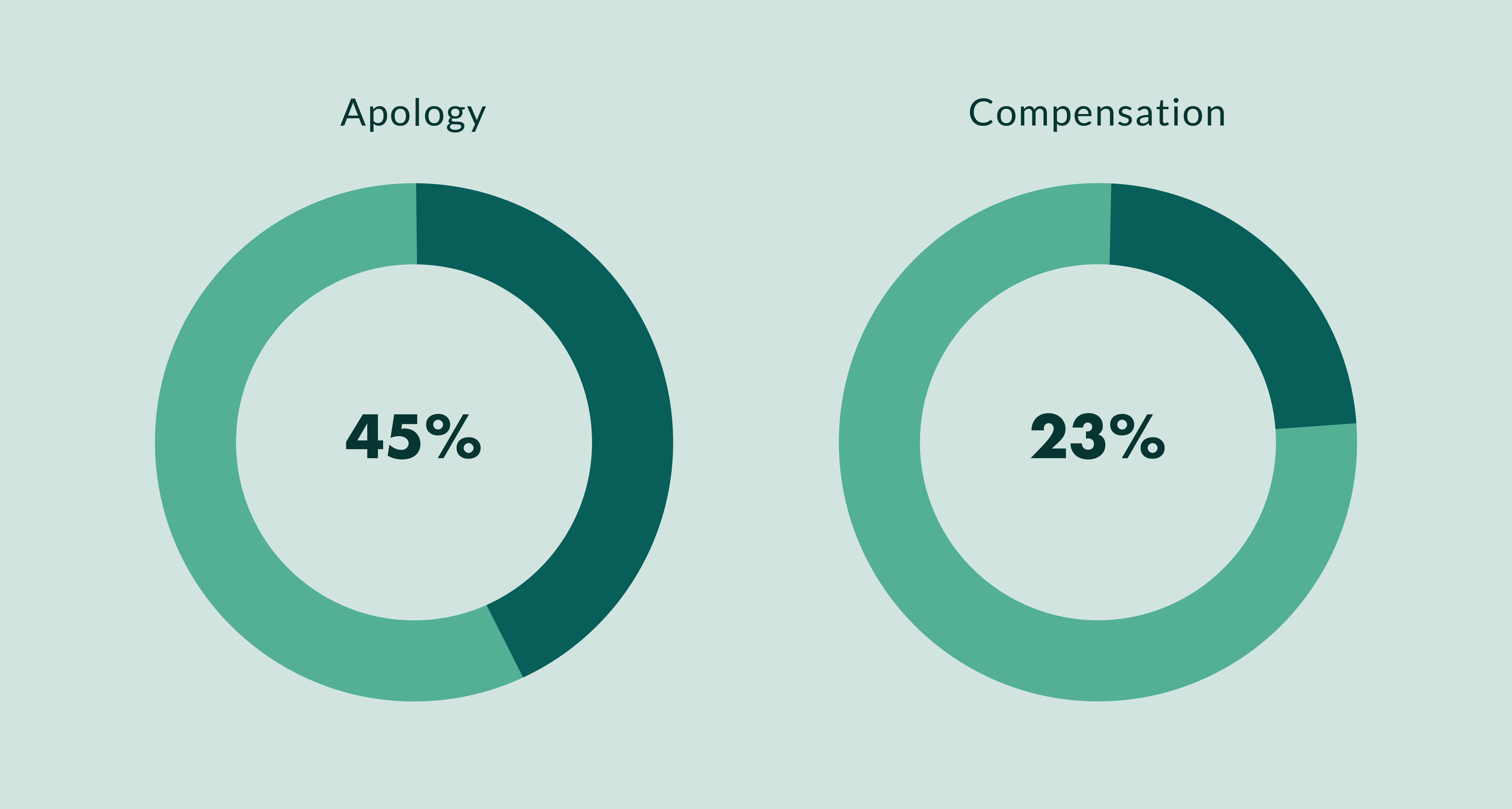
The researchers concluded that when a customer hears the words “I’m sorry”, it triggers an immediate instinct to forgive.
Don’t just stop at the apology, follow through with a promise to resolve the complaint.
4. Find a solution
When your customer has a legitimate complaint, you need to find the root cause and solve it.
Give your customer service team the authority to handle the majority of customer complaints to avoid passing your customer onto a series of people and managers. If the issue has been or can be repeated, make the necessary changes so you do not receive another complaint.
Let's take a look at a customer complaint example:
Imagine you have a customer whose account is up for renewal. You reach out to them manually, before taking payment (as required by the GDPR) and they are happy to continue with their subscription.
But, for some reason or another, you charge them twice for the same amount.
The result?
They are not happy and decide to cancel their account.
Giving your employees the authority to handle these kinds of issues means allowing them to issue a refund and handle the request without having to escalate the case to a supervisor. It also means that the customer gets their issue solved quickly.
Positive customer service experiences have a measurable impact on spending. American Express research shows that 86% of customers are willing to pay more for a better experience.
This data illustrates the potential revenue increase that can be achieved by turning customer complaints into opportunities for exceptional service.
Free template: Once you have issued the refund, you can send them an email using the template below.
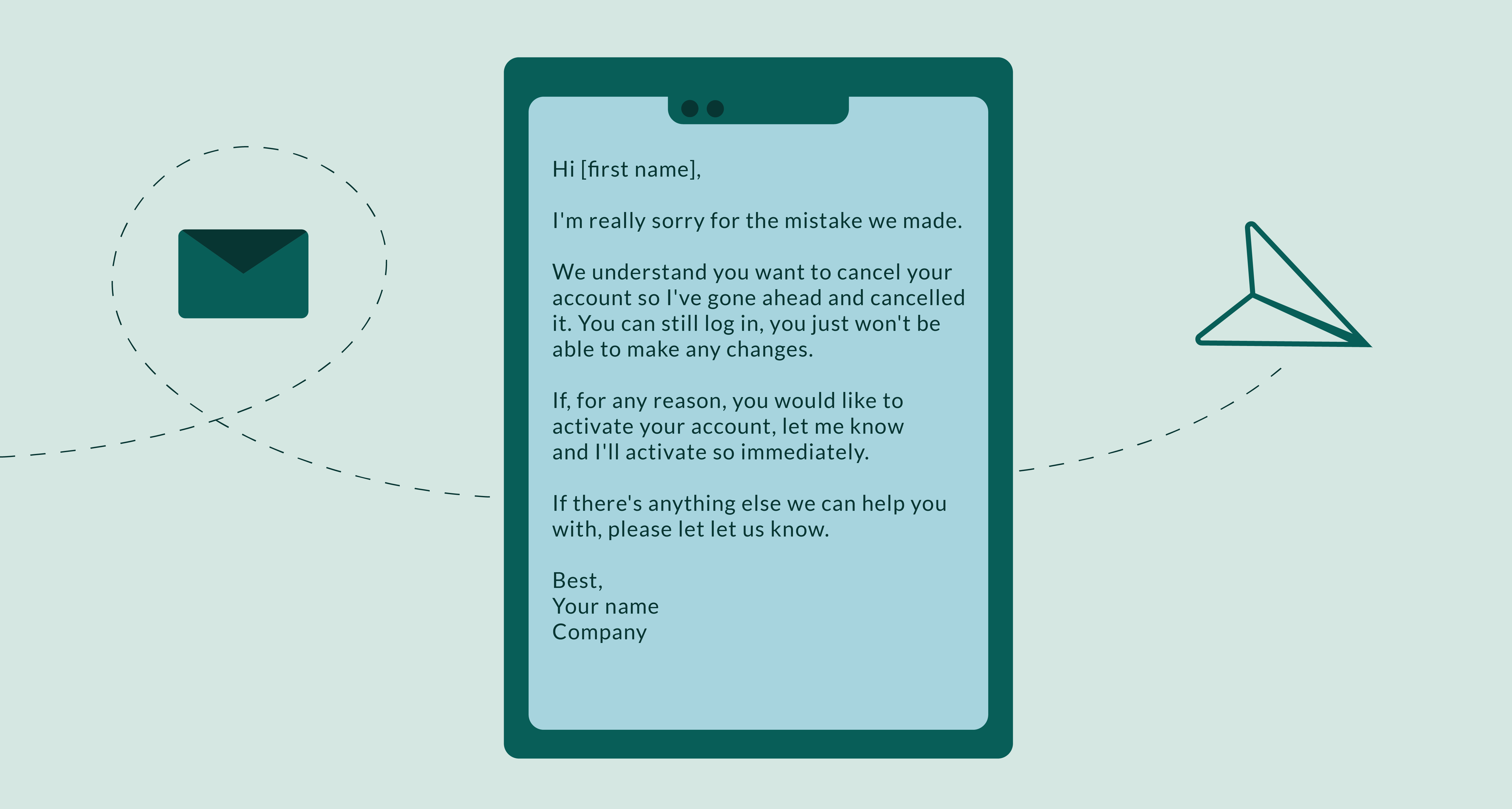
5. Record their feedback
Your customer complaints could be a goldmine for finding exactly how your company can improve.
Maybe there’s something wrong with your product when customers use their mobile device, or there could be something missing from customer service replies.
In order to understand what you need to improve on, start documenting the comments and complaints to find patterns and trends that are recurring.
Whatever it is, document it for later and make time to inspect and reflect.
(One way to document their feedback is in the contact card in your CRM. You can then export a list of complaints on a monthly basis to review and share internally).
6. Follow up with the customer
You’ve solved the problem, shared the news with a customer, but you haven’t heard back. Now what?
Easy. Follow up with your customers to make sure they are satisfied with the solution. This can be in the form of a follow up email or survey asking for feedback on how the complaint was handled.
Almost 70% of customers leave a company because they believe you don’t care about them.
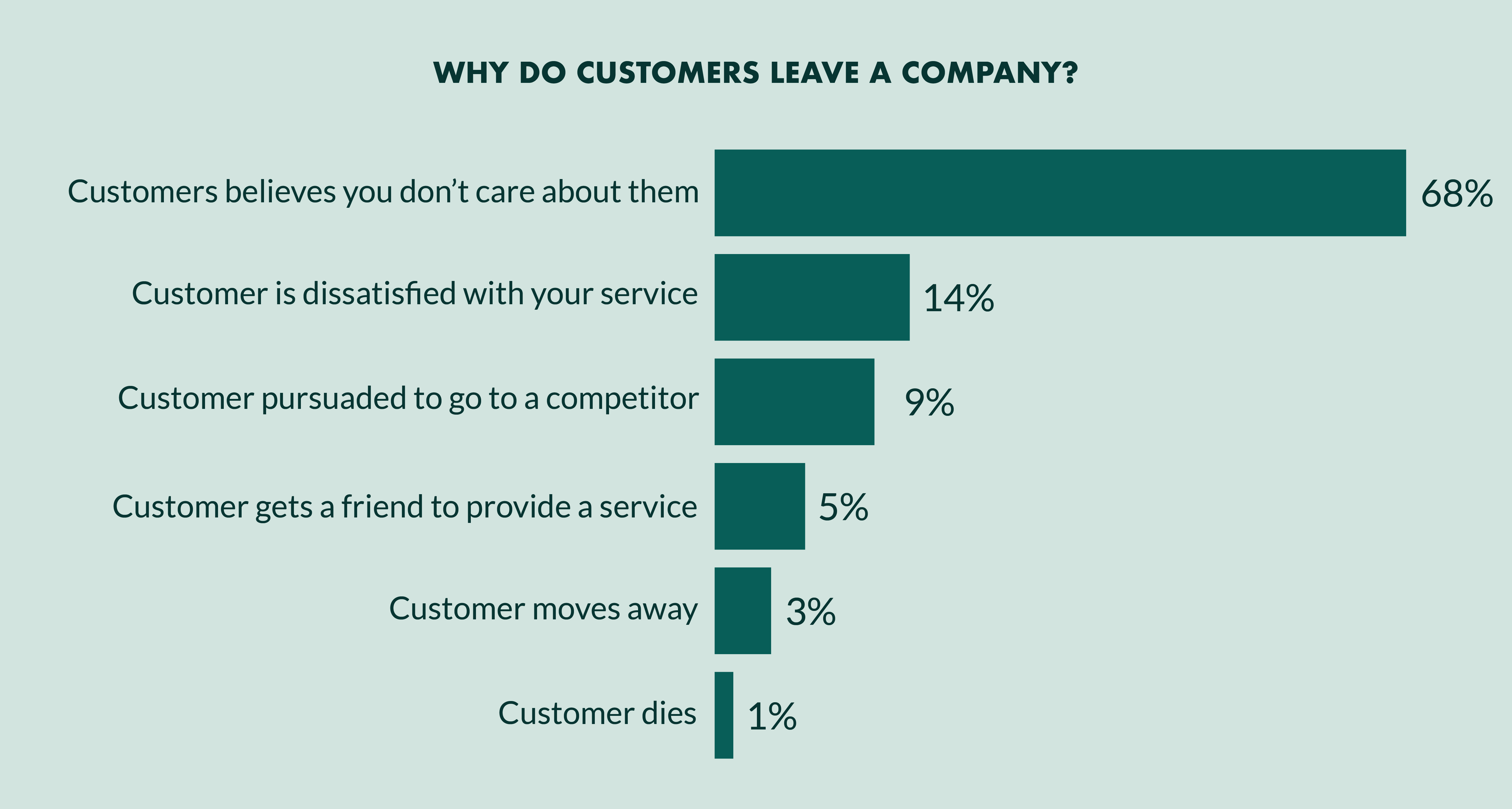
Very few companies follow up with their customers.
Following up shows you care. And this makes the customer feel important.
Not sure how to follow up?
Use the template below.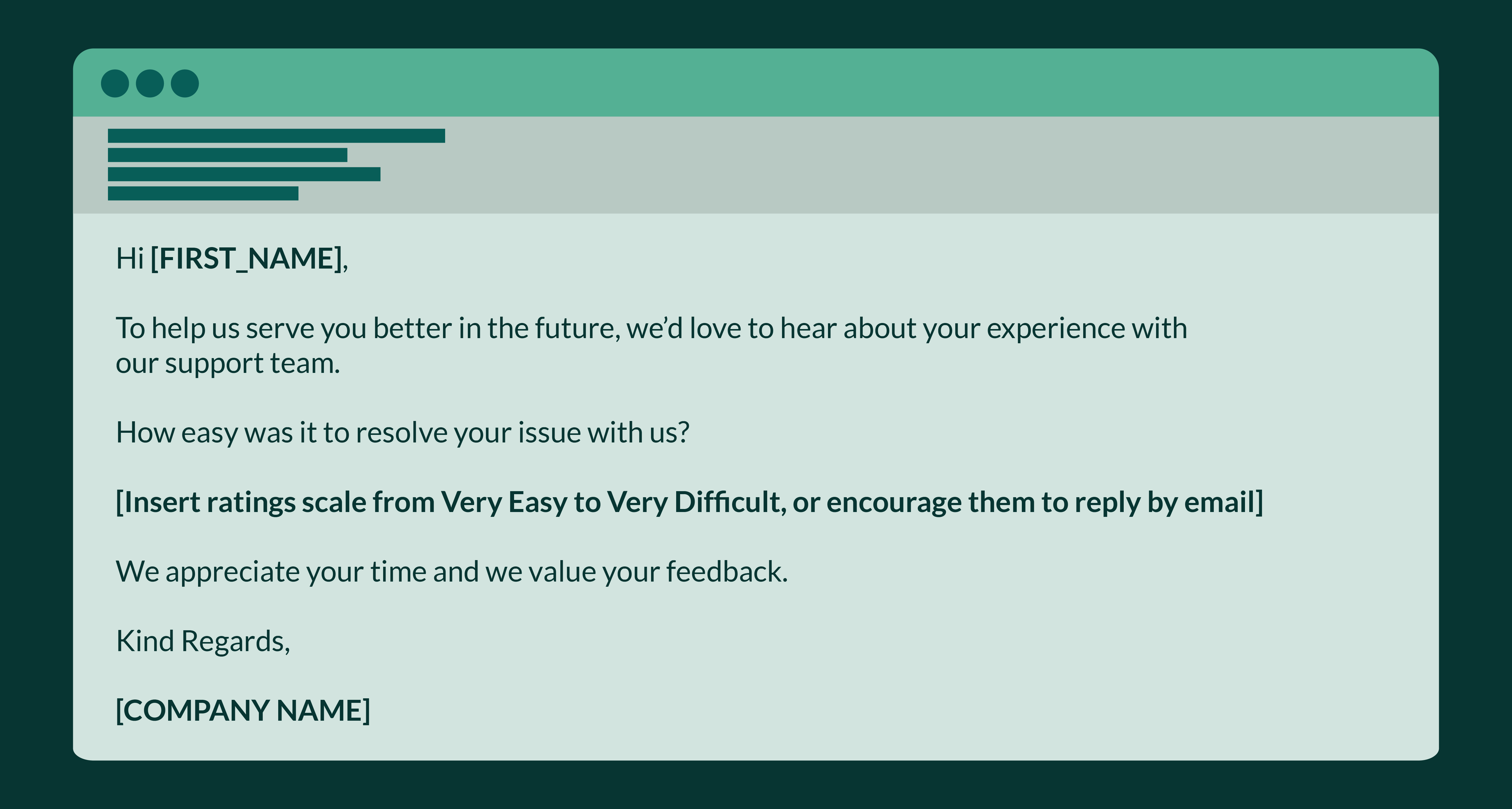 7. Exceed expectations
7. Exceed expectations
You have acknowledged the mistake, fixed the problem and followed up.
Now, it’s your chance to go one step further and exceed customer expectations, whether this is to send a hand-written thank you note or to give the customer early access to your new product features.
Remember that customers pay close attention to the small details when they’re feeling distressed. The way you interact with customer complaints after their problem is resolved sets the stage for the rest of your business relationship.
In fact, if your post-complaint actions are done successfully, the next time your customer talks about your business, this will be the message they communicate most
Customer complaint checklist
Solving customer complaints is a lot like putting out fires. It’s reactive, and no matter how good your product or service is, it’s impossible to please all of your customers.
The next time you receive a complaint, use the following 5 step check list in order to respond, resolve and keep your customer happy.
- Acknowledge the complaint
- Inform the customer that you are taking action
- Record and categorize the customer complaint
- Resolve the complaint according to company policy
- Follow up with the customer to make sure they are satisfied
Handling customer complaints is an ongoing process. You can use web forms to collect complaints from your website and then use customer service software to store the complaint on each customer profile. Remember to monitor complaints on a weekly or monthly basis so you can track new complaints and trends, and be sure to follow up on open complaints.
It's worth reminding, but if a customer leaves you, you lose business. So, don’t be afraid to escalate reoccurring complaints to top management in order to get them resolved quickly.
Proactive complaint handling
As mentioned earlier, not all customers will complain directly to you.
The internet enables customers to share their feedback in multiple channels, including forums, comparison websites, social media networks and more. Without taking the necessary steps, these complaints can snowball, and even go viral.
This means you need to engage in social listening and get proactive in customer complaint handling.
Finding complaints online is not easy, but here are a few suggestions on where to start:
- Have any negative comments been made on your blog?
- Has your brand name been mentioned on Twitter or LinkedIn?
- Do customers post messages on your Facebook page?
- Has anyone left a bad review on your Google My Business page?
- Are the comments made on your YouTube channels positive?
- Is your brand listed in any complaint directories or forums when you search in Google?
All these channels will need to be monitored. If you don’t respond, readers will assume you don’t care. If you respond to messages online, it can be seen as though you are making an effort and that you do care. This act alone can inspire brand loyalty and customer confidence.
Conclusion
Customer complaints are important.
And there’s no better way to collect direct feedback from your customers and improve your product or service.
However, the way you handle a complaint is the difference between keeping a customer or losing one. So, the next time you receive a customer complaint, listen to what the customer has to say, apologize (!), find a solution and follow up to see if he or she is happy with the way you are handling it.
In doing so, you are on your way to creating more loyal customers, improving your product and delivering a better quality of customer service.
Looking for a more effective way to manage customer complaints?
Book a free demo of SuperOffice Service and we’ll show you how to manage, track and respond to your customer base.
Customers also ask
How do companies differentiate between constructive customer complaints that can lead to improvements and complaints that may not be actionable or relevant to the majority of customers?
When companies receive customer complaints, differentiating between constructive feedback and less actionable complaints involves a thorough analysis of the complaint's content, frequency, and the impact on the customer experience. Constructive complaints often highlight specific issues with products, services, or customer interactions that can be traced, measured, and improved upon.
These are typically consistent with feedback from multiple customers or align with the company's strategic goals for enhancing customer satisfaction. To manage this, companies might employ feedback management systems, customer surveys, and direct customer outreach to gather a broad spectrum of insights, ensuring that the actions they take are informed by a representative sample of their customer base.
What specific training methods or programs do successful companies implement to equip their customer service teams with the skills needed to effectively analyze and respond to customer complaints?
In terms of training customer service teams, successful companies often invest in comprehensive programs that focus on developing empathy, problem-solving skills, and product knowledge.
This training might include role-playing exercises that simulate challenging customer interactions, workshops on emotional intelligence to better understand and respond to customer frustrations, and ongoing education about the company's products and services to ensure that customer service representatives are well-informed and capable of addressing specific issues.
In addition, companies might incorporate feedback from actual customer interactions into their training programs, using them as learning opportunities to continuously improve the team's effectiveness.
Beyond the initial resolution of a complaint, what long-term strategies do companies employ to monitor the effectiveness of the changes made in response to customer feedback, ensuring continuous improvement and customer satisfaction?
For long-term strategies beyond the initial resolution of complaints, companies typically implement a feedback loop into their customer service processes. This involves regularly reviewing the changes made in response to customer complaints, assessing their impact on customer satisfaction, and making further adjustments as necessary.
This might include follow-up surveys with customers who have lodged complaints previously, to gauge their satisfaction with the resolution process and any changes made as a result. Additionally, companies might use key performance indicators (KPIs) related to customer satisfaction, such as Net Promoter Score (NPS) or Customer Satisfaction Score (CSAT), to monitor trends over time and identify areas for continuous improvement.
By embedding these practices into their operational framework, companies can create a dynamic environment that not only addresses customer complaints effectively but also fosters a culture of continuous improvement and customer-centric innovation.
